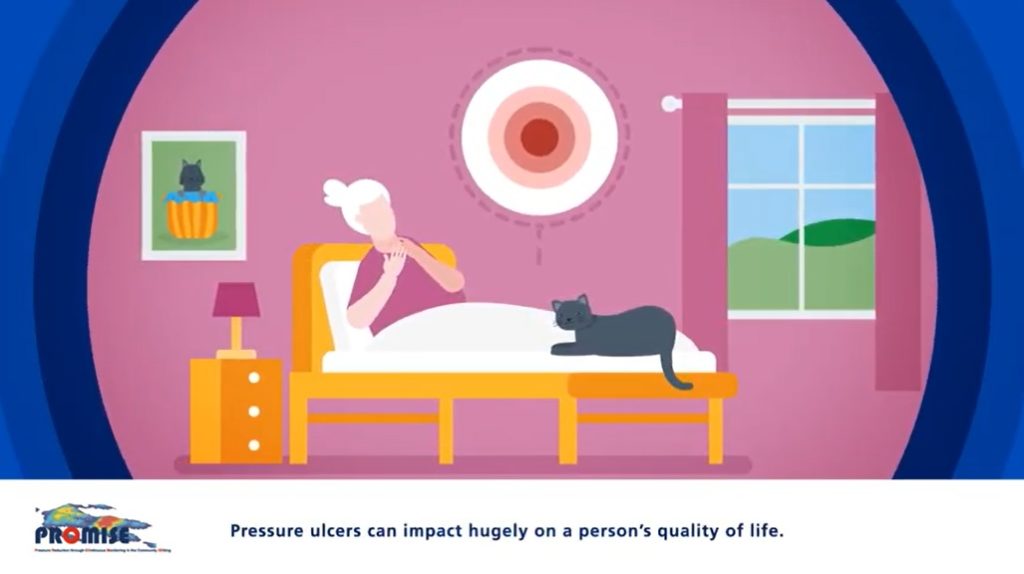Showing our impact – REF 2021

May’s Research Excellence Framework (REF) results brought good news for SES institutions. All seven of our members appeared in the top 20 of rankings published in the Times Higher and demonstrated high levels of world leading research outputs.
But more importantly, the REF case studies, which are published online, also showed examples of how our members’ research is making positive social, environmental, technological, health and economic impacts. Here are some highlights of some of their most impactful case studies from REF2021.
Queen Mary University of London
Research by Queen Mary’s River Communities Group underpins a new land management scheme in Wales designed to reduce pollution of waterways from agriculture. Known as Glastir, the scheme was funded by the Welsh Government from 2014-20 and determined how £125,000,000 was allocated to Welsh farmers to support environmentally friendly farming practices.
The research provided evidence that change was needed from the previous scheme, which was failing to deliver the desired reductions in diffuse pollution. A targeted approach was recommended, designed to achieve improvements in habitat quality, species populations, water and soil quality.
The funding support targets specific locations with interventions that are more appropriate for them than previous ones, enabling local diffuse pollution to be dealt with efficiently with greater environmental benefits than the schemes it replaced.
By modelling the appropriate targets for funding, Glastir is a highly cost-effective scheme, benefiting both the biodiversity and wider economy of Wales and has influenced the development of the Agri-Environment Climate and Environmental Stewardship schemes in Scotland and England. As well as farmers, the scheme also benefits other land managers, including wildlife charities.

Evaluation of the programme showed a 17% increase in the number of farms in Glastir schemes reporting to have taking action to combat climate change, compared to non-scheme farms. There was also a reported 15% increase in investment by Glastir farms in on-farm renewable energy production and a small but significant reduction in pollutant loads from agriculture.
The project is one of a number from the River Communities Group featuring in REF2021 case studies with others including research highlighting rivers at risk of fine sediment pollution.
King’s College London
Sickle Cell Disease is a haemoglobin disorders that is one of the most common genetic disorders worldwide and affects people with Black African and Caribbean heritage.
King’s College London is one of the UK’s leading research centres for this condition. Since 2000, King’s has identified the effectiveness of implementing antenatal and newborn screening for sickle cell disease and helped to set up the national NHS screening programme. As part of its case studies submitted to REF2021 King’s research shows the reliability of these screening programmes and how they are improving the treatment of patients and the prevention of secondary conditions.
This research has achieved impact through its contribution to design and roll-out of the national NHS antenatal and newborn screening programmes for sickle cell disease and thalassaemia. By showing the effectiveness of these screening programmes they have helped to give people with sickle cell disease and their families improved access to care. Individuals with sickle cell disease now benefit from earlier diagnosis soon after birth and more effective and equitable treatment.
Previously many cases were missed, which meant that the scale of need was under-recognised and deaths of infants with sickle cell disease contributed to higher infant mortality rates in urban areas as babies died without a diagnosis or treatment.
According to a report by an All-Party Parliamentary Group, there has been a historic underinvestment in sickle cell research and treatments over decades, right up to the present day.
The effectiveness of the screening programme in the UK has led to the development of newborn screening programmes in health services of countries across Europe where they do not yet exist and have helped to encourage quality improvement of existing programmes.
University of Cambridge
Research at the University of Cambridge into sensing and data analytic technologies has led to new approaches to the performance and safety monitoring of infrastructure assets during both construction and operation.
Researchers at the Department of Engineering recognised that developing new sensor technologies and data analytic approaches could transform infrastructure construction and whole-life management of assets. The deployment of these smart infrastructure approaches for asset monitoring and management has increased safety during construction.
They are also achieving economies through performance-based design, reducing construction delays, supporting cheaper and less disruptive maintenance of operating infrastructure and extending the lifetime of high-value infrastructure assets.
Examples of impact include major construction costs savings, improved safety on construction sites, and the protection of historic buildings during underground construction.
The new monitoring techniques have led to one business alone reducing CO2 emissions by 1,000 tonnes since 2016 through reduced use of construction materials. Another outcome of the research was the creation of more than 25 new jobs, through the establishment of three spin-out companies and Skanska’s CemOptics new instrumentation system based on the research.
The research was further developed through a series of projects with Southend-on-Sea Borough Council, Thames Water, Crossrail, Skanska and a number of other organisations.
Sir John Armitt, ICE Past-President, summarised the impact of smart infrastructure sensing: “Data can now be readily collected, analysed in real time and compared across assets, companies and countries… This enables better decisions on the construction of future assets, better running of today’s existing assets, and far better avoidance of failure, not to mention long term financial benefits such as significantly reducing whole-life costs.”
University of Southampton
A multidisciplinary team of researchers at Southampton is using sensing technologies to maintain skin health and improve pressure ulcer prevention in vulnerable patients.
Working with the NHS, the group has pioneered the use of sensors to reduce pressure ulcer risk, resulting in improved patient experience and adoption by four NHS trusts.
The team has worked with industrial collaborators to develop sensors that can be integrated within a prosthetic device for amputees and provides real-time patient feedback regarding the interface conditions, used to monitor risk of skin damage.
Since 2017, the Skin Health Group has collaborated with Cornwall Partnership NHS Foundation Trust to reduce pressure ulcers in the acute and community clinical settings through the PROMISE programme.
Funded by the Health Foundation, the project deployed the intelligent pressure monitoring sensors that the Group optimised for patients’ evaluations.

Sensors in mattresses and chairs were used to help patients and carers to better understand the positions that are likely to reduce the risk of pressure ulcers, and clinicians were able to monitor patients remotely over prolonged periods for the first time.
By the end of the impact period, the technology had been adopted by four NHS trust sites in Cornwall, Devon and Somerset. It had been used by 88 individuals in their homes; 66% of patients with chronic pressure ulcers had healed or were healing within nine months of using the sensors.
An independent evaluation commissioned by the Cornwall Trust revealed ‘a significant impact on patient care and clinical decision-making’.
University of Oxford
GDm-HealthTM is a prescribed app to help manage gestational diabetes. It is now deployed throughout the NHS in England, having been designed by an Engineering research group at Oxford, with extensive input from both patients and diabetes specialists.
Gestational diabetes mellitus (GDM) affects 16-20% of all pregnancies in the UK annually with important implications for the health of the mother and baby. Women with GDM are predisposed to many co-morbidities including type 2 diabetes and their babies are prone to adverse health outcomes both before and after birth, including carrying a higher risk for future obesity and type 2 diabetes.
The app has evolved from a generic digital health system developed in the early days of smartphones and tablet computers. Following a feasibility study, a gestational diabetes version of the system was developed with a Bluetooth-enabled glucose meter for the pregnant woman and alerting algorithms for healthcare professionals.
A randomised Clinical Trial with 203 participants with GDM using the GDmHealthTM app found that preterm birth was less common in the intervention group and there were fewer caesarean deliveries in the intervention group.
According to NICE, the system saves the NHS, on average, £230 per patient by reducing the need for face-to-face appointments. Given estimates that 130,000 pregnant women have either pre-existing or gestational diabetes each year in the UK, the cost-saving potential to the NHS is £29,900,000 per year.
According to figures from March 2022, the app is now operational in 66 NHS Acute Trusts – more than half of the NHS Trusts in the UK which look after women with gestational diabetes. Almost 50,000 women in these Trusts have used GDmHealthTM and there are more than 2,000 new users a month.
University College London
The START (STrAtegies for RelaTives) intervention is a psychological therapy to reduce anxiety and depression in family carers of people with dementia.
Researchers in Statistics and Psychiatry led a multi-disciplinary group of researchers that developed and evaluated the START intervention, a programme of therapy and coping strategies for dementia carers.
The increasing dependence and challenging behaviour of people with dementia strongly affects the mental health of family members, who provide much of their care. Approximately 40% of these carers have clinical depression or anxiety, while others have significant psychological symptoms. Evidence from systematic reviews suggests that psychological interventions individualised to the carer are most effective in preventing breakdown of patient care and delaying care-home admission.
Statistical modelling showed the START intervention to be cost-effective and clinically relevant over the short- and long-term in terms of treating anxiety and depression. For the depression subscore, carers who participated in the “treatment as usual” group were four times more likely to have clinically significant depression compared with those who received START.
The positive clinical effect of the START intervention was sustained after 24 months, as evidenced by improved carer mood and lower anxiety levels.
START was also shown to be cost effective with respect to carer and patient outcomes. The most recent analysis over a six-year period, showed that carers who participated in the START programme were five times less likely to have clinically significant depression than carers in the treatment as usual group.
The intervention has improved UK policy and guidance on dementia care. The intervention is used in the UK by at least 24 services across 12 NHS Trusts and by charities such as the UK Alzheimer’s Society.
Imperial College London
A long-term study of the quality and safety of hospital care has showed the success of a statistical monitoring tool in helping NHS hospitals and trusts improve over the past 10 years.
The tool for quality and safety of hospital care using routine data, was developed at Imperial with Dr Foster Ltd and is now used by managers and clinicians in more than half of English NHS hospitals. This tool has been found to have helped to improve standards of care and saved lives and continues to do so.
The tool was a major factor behind the Francis Inquiry into the high mortality at Mid Staffordshire NHS Trust. It led to the 2013 UK Department of Health’s Keogh Mortality Review that used Dr Foster data and put 11 high-mortality hospitals into special measures.
Designed to monitor hospital outcomes across hundreds of diagnosis and procedure groups, with data updated monthly, the tool monitors the outcomes of death, emergency readmission and long length of stay.
When the Care Quality Commission assessed the 11 hospital trusts in August 2014, they found many improvements. For example, one of those hospitals, Sherwood Forest, put in place regular audits and sufficient handover time between shift changes leading to a significant reduction in its sepsis mortality rates after 2016.
To investigate the impact of the monitoring system beyond those 11 trusts, in 2018 Imperial staff evaluated the monitoring tool in a peer-reviewed report. On average, the relative risk of death fell by 58% during the 9-month period immediately following an alert and then levelled to a slow decline
The tool changed how some hospitals responded to information such as death rates, leading to changes in their processes. Full action plans were created in 77% of trusts investigated, and several hospitals reported positive changes in culture.


